How Many Hats Does It Take to Plant a Neighborhood?
/A Tale of Where Did the Plants Go by Outreach Specialist, Kari Quaas
Katrina, Donna and Kelly, Riverside Neighbors
Depending on the conversation, I may wear a variety of hats. Last week, I was wearing my Northwest Everett Neighborhood Chair hat attending an annual holiday reception, where I met a woman, Katrina Lindahl, who sits on the Tree Committee. Earlier in the year, I sent a letter inquiring about the Sycamore trees along Colby Avenue from 10th to 19th Streets to the Parks Department that oversees this committee. The Sycamore trees have reached their peak heights and have become a leafy, limby mess come fall, and their roots are beginning to affect the sidewalks and roadways. In other words, it’s time to think about replacing them. In a dream world, this would be an easy thing to do. New trees could be planted and they’d grow up really tall right away, right? However, we are all smart enough to know that trees are slow to grow, and it takes a village of staff, volunteers, time, planning, and money to make it happen.
What’s the adage?
“A society grows great when old men plant trees in whose shade they know they shall never sit.”
As we continued chatting, Katrina mentioned that she lived in Everett’s Riverside Neighborhood where they’ve been buying trees from the Snohomish Conservation District (SCD) Plant Sale for 10 years! Tell me more, I think and said. So she did. And that’s where my virtual hat switched to my Snohomish Conservation District and SCD Plant Sale outreach one.
The Riverside Neighborhood sits on the northeast side of Everett bordering the Snohomish River and is split into ⅔ and ⅓ by Interstate 5.
She, along with other Riverside Neighbors, lead an effort to plant trees next to the noise walls along I-5 in north Everett. Here is the excerpt of their vision as submitted to the City of Everett Office of Neighborhoods.
Noise to Nature Neighborhood Landscaping Project Description:
“Riverside neighbors would like to plant a mix of native and non-native trees, shrubs and vines along six one- to two-block sections of the freeway noise wall (the residential side) to beautify harsh concrete walls, increase Riverside’s natural environment, buffer noises, filter air pollution, and reduce carbon from freeway traffic.”
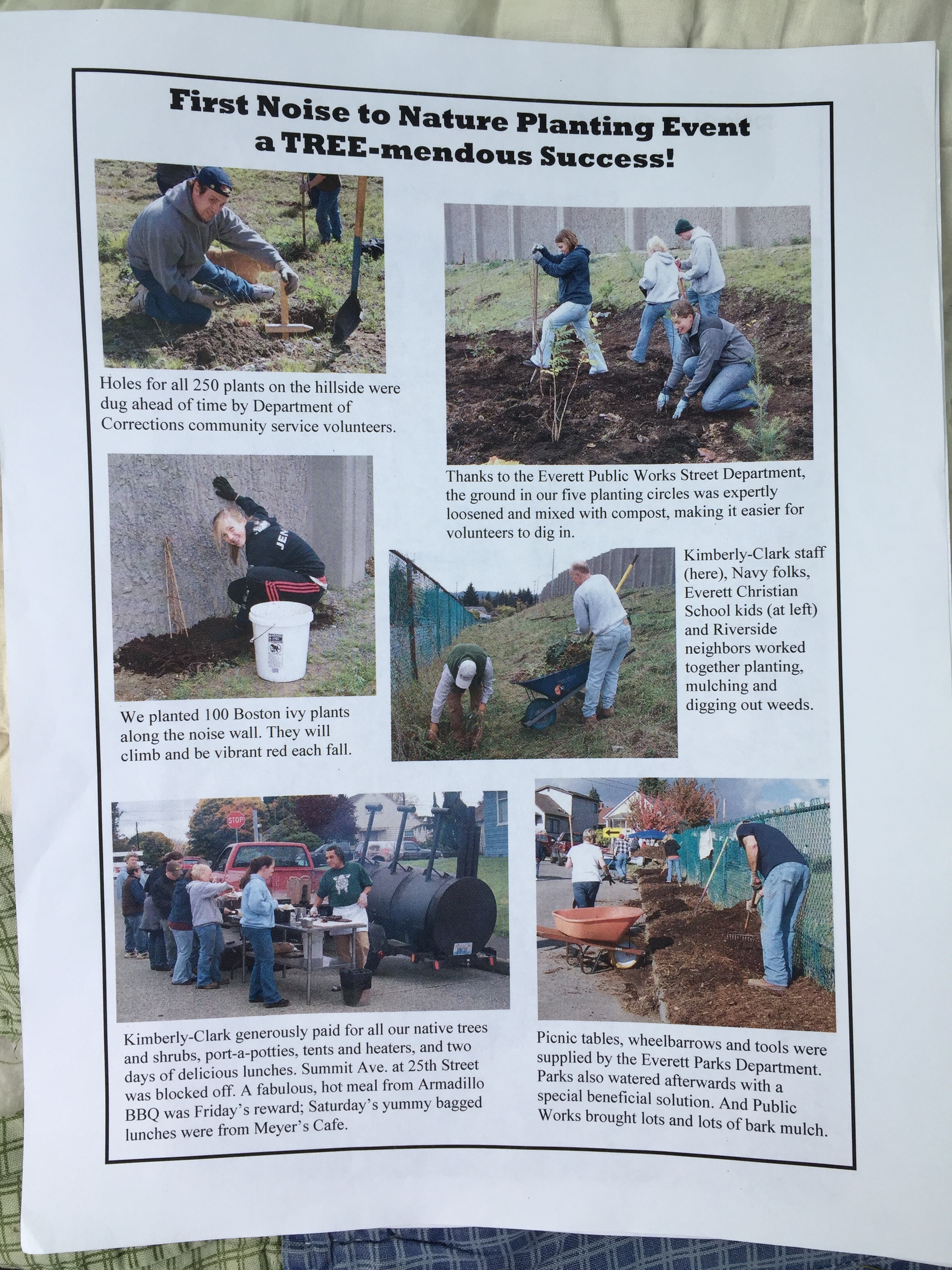
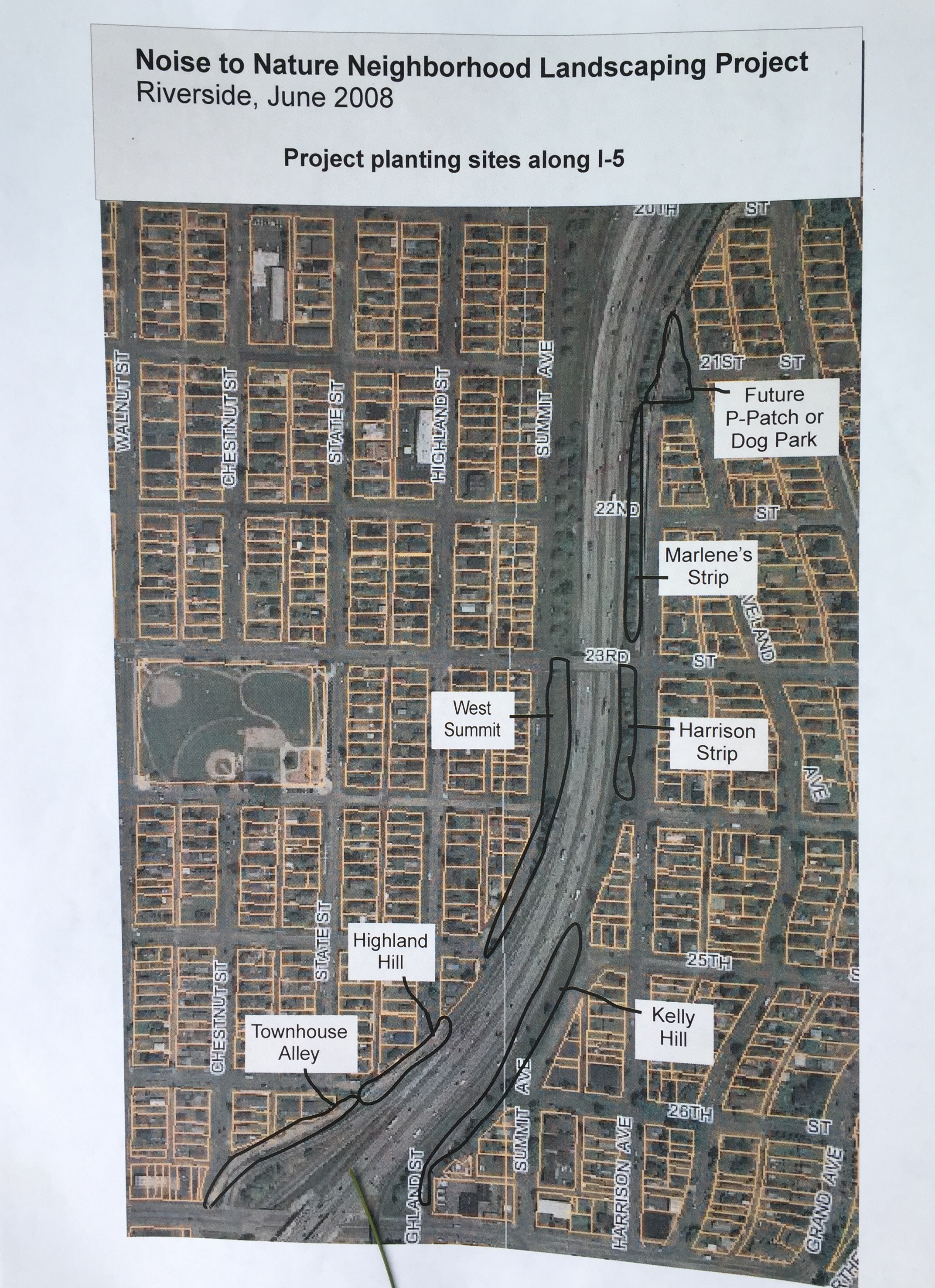
Since there’s nothing like taking a look for oneself, I met Katrina and another Riverside neighbor, Donna Gleisner, who was the Noise to Nature project lead for the planting, for a tour of Kelly Hill, one of those six sections referenced. I also happened to meet Kelly, for whom Kelly Hill was named! Throughout our conversation, the ladies continually brought up Vicki Rosenau, another neighbor, who is one of their key volunteers that put in many more hours clearing brush away from trees, limbing up trees, weeding, planting, and patrolling litter at this site.
All told the most impressive thing to me was the match. Match is loosely defined as non-financial contributions that make a project possible. Usually, it comes in the form of donations or volunteer hours. From less than $20,000 in cash, via the city grant and Kimberly Clark, came the extraordinary amount of $140,000 in volunteer match.
Each volunteer hour has a dollar value and tending to those plants, weeding, watering, designing flyers, etc., all add up. Their two-day initial work party received physical support from some 80 volunteers and they planted 250 native trees and shrubs. Volunteer support came from the Department of Corrections, the Washington State Department of Transportation, the Everett Navy, the City of Everett Parks, Public Works and Streets, Everett Christian School students, Kimberly Clark, and of course, lots of Riverside neighbors who showed up to beautify their neighborhood.
Before the noise walls went in, the hillside used to be covered in Big Leaf Maple and Douglas Fir. After construction, some of the soil next to the wall was more like a cement slurry and pH 8. So, the Corrections community service volunteers, who created the holes for the plants, filled them in with new soil, and over the years, they have continued to amend the soil to improve its health.

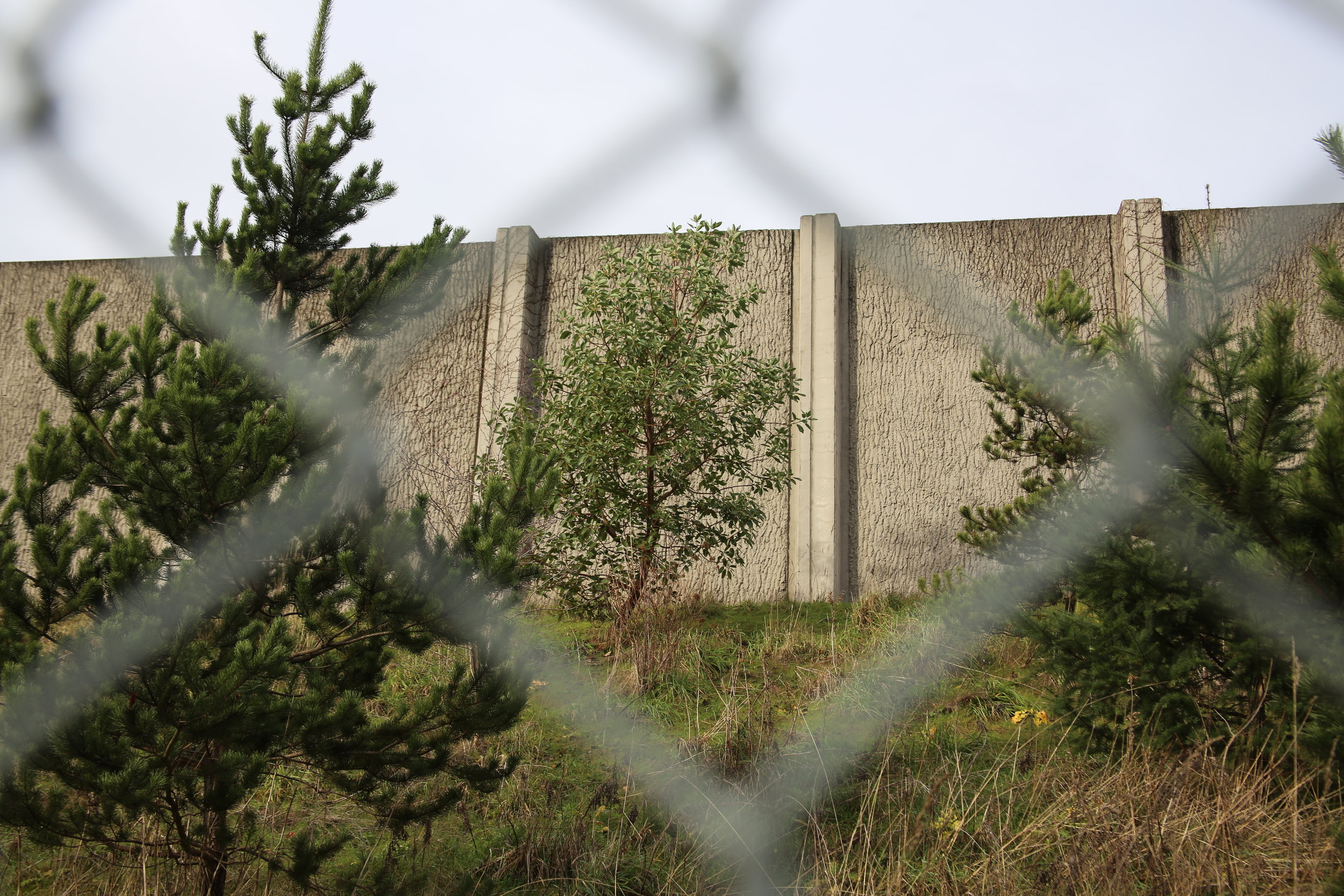
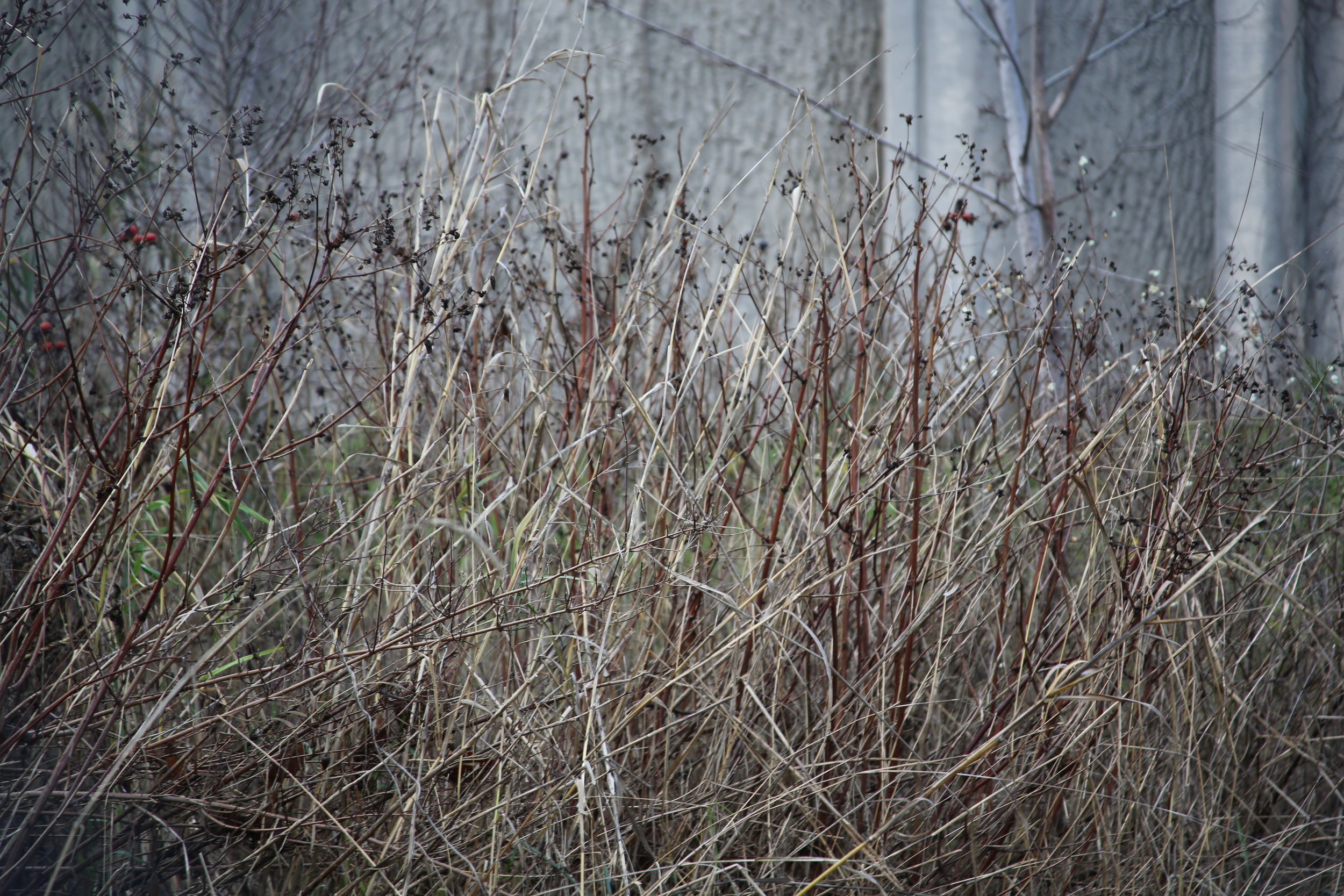
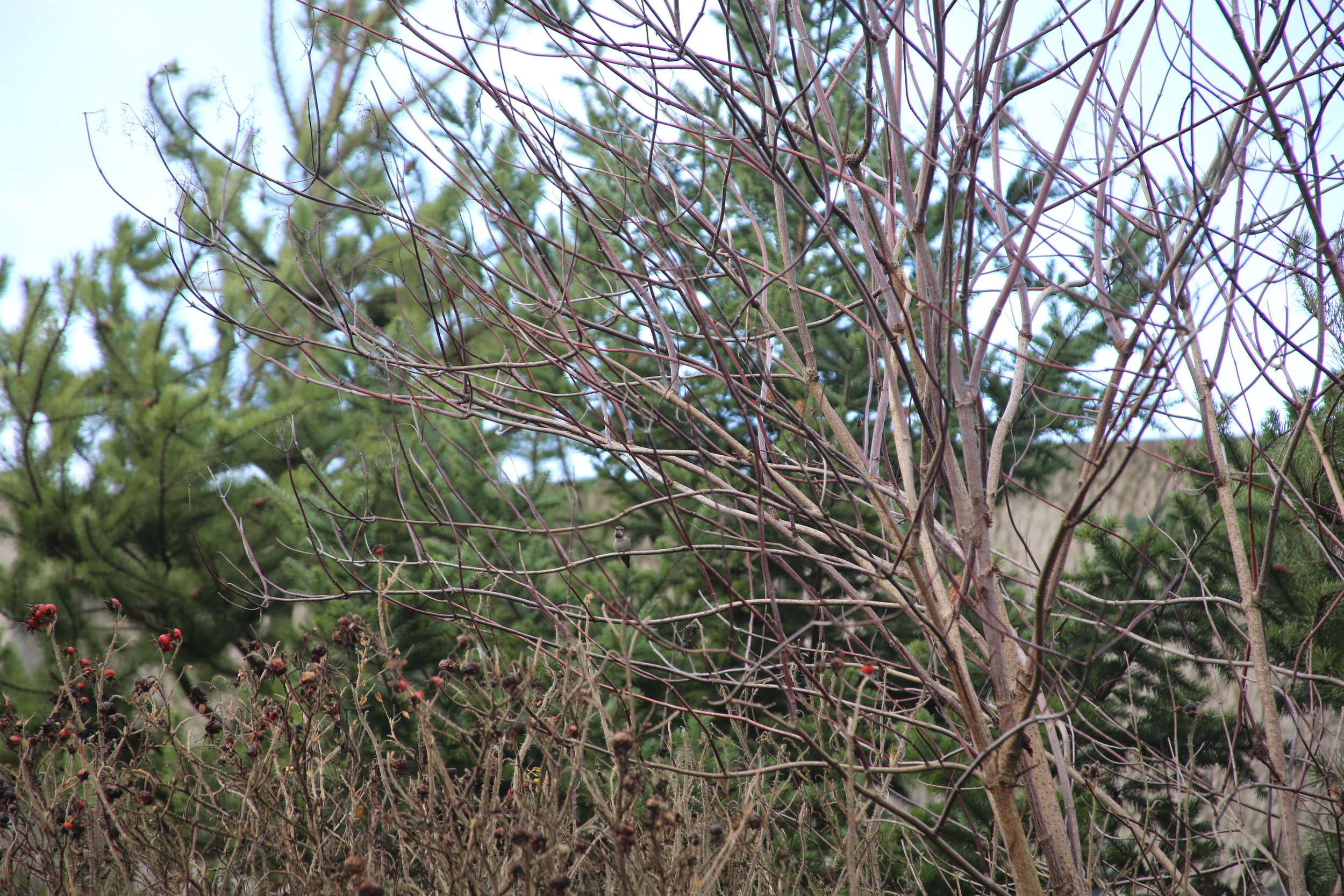
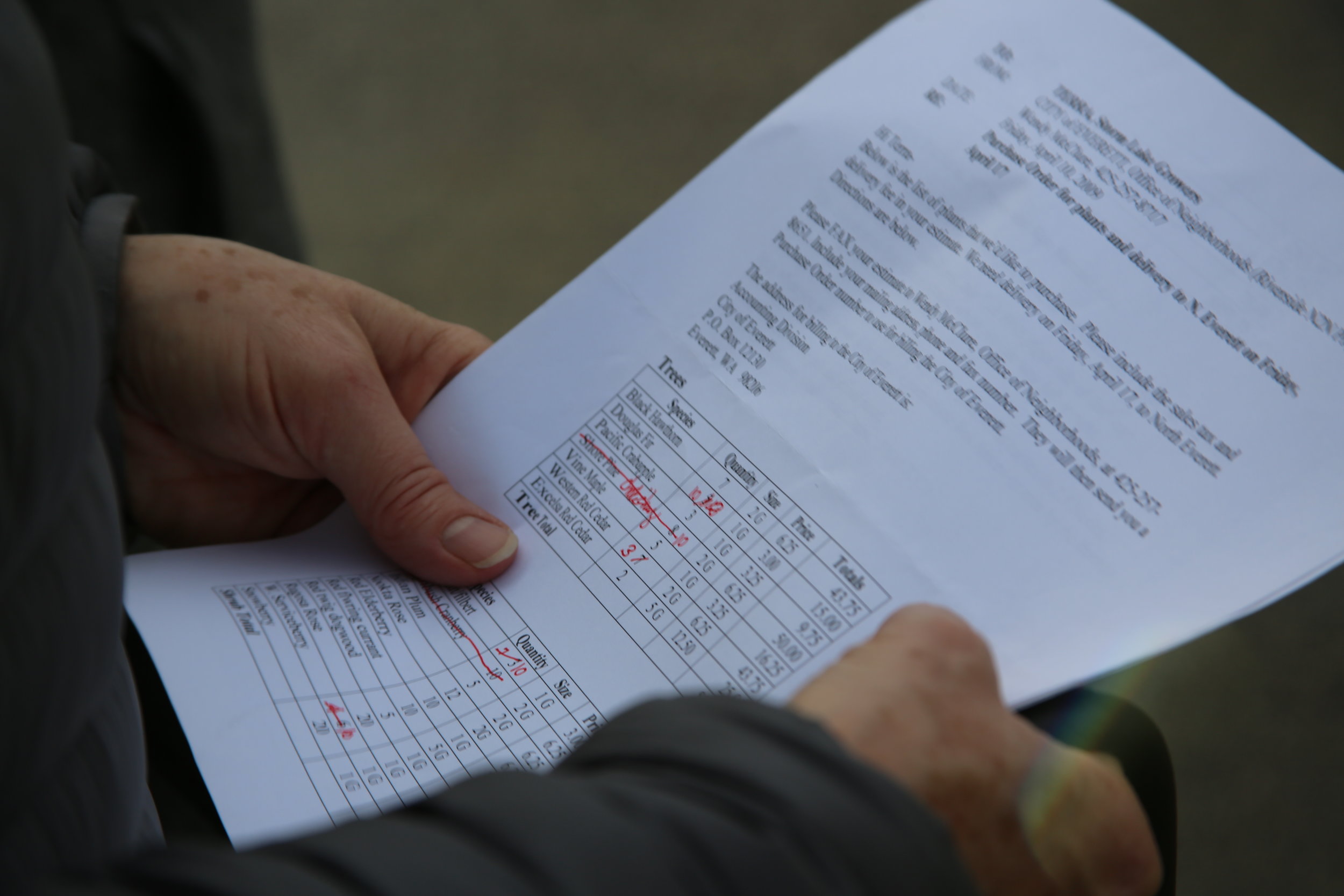
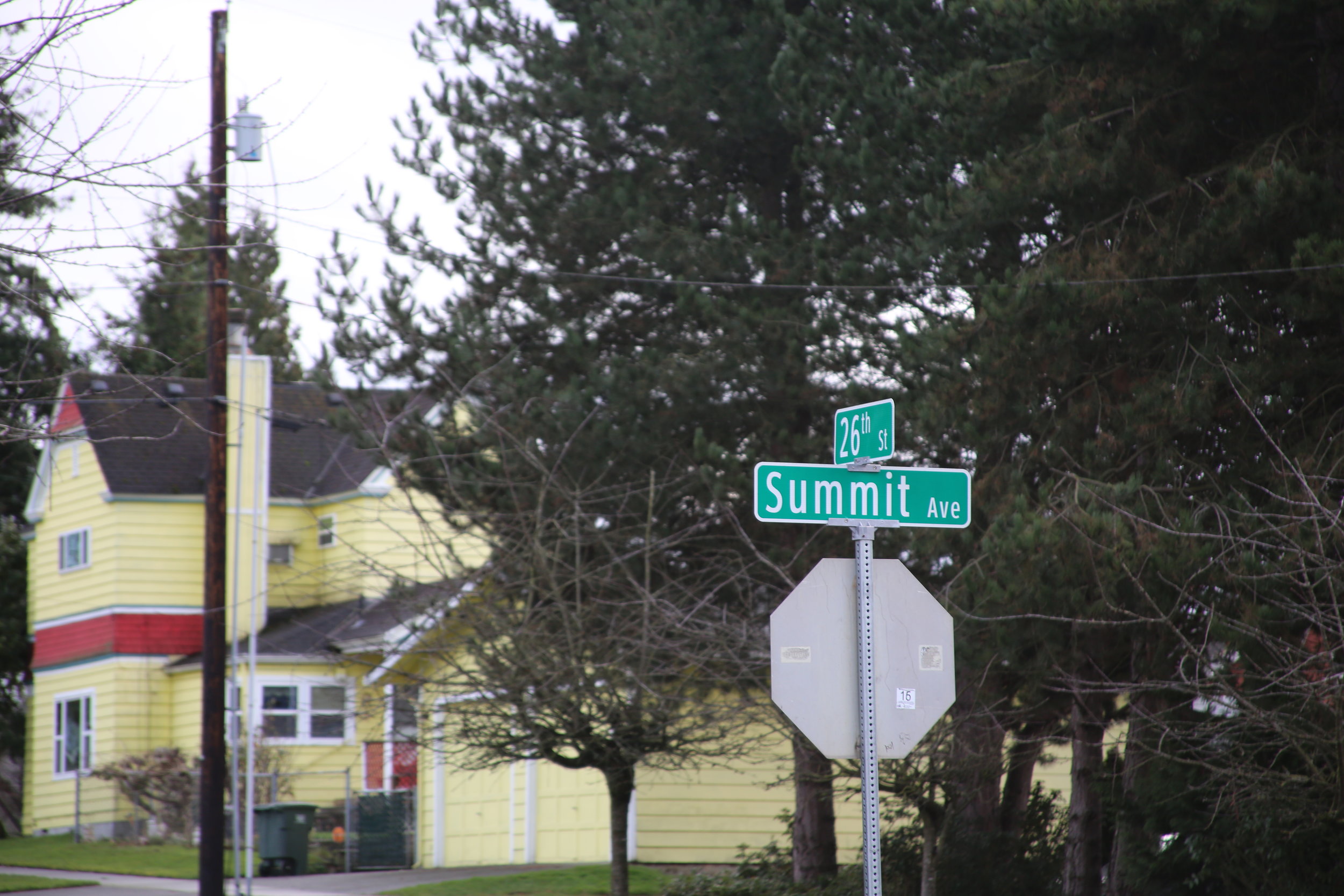
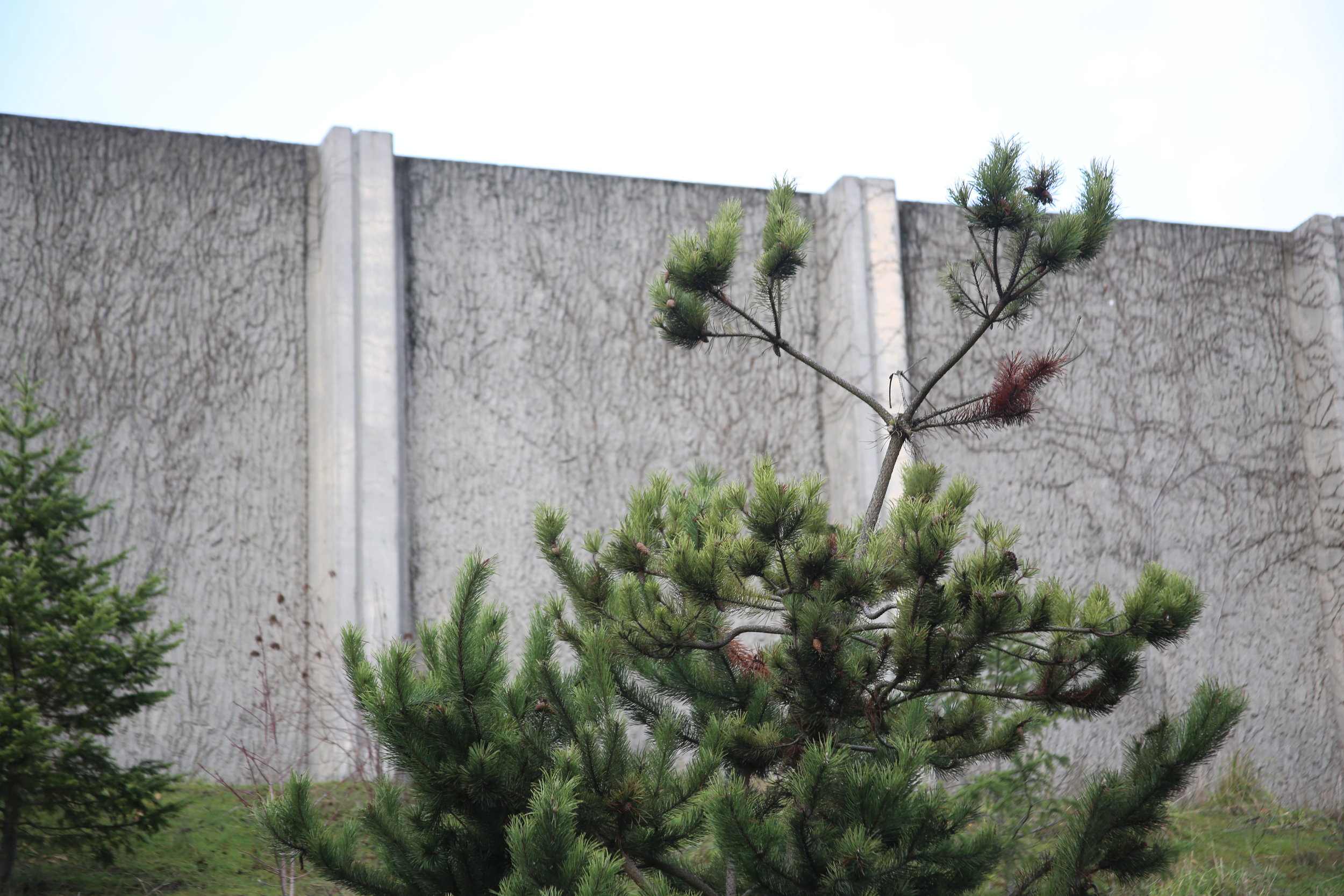
When you look around the hillside now, you see Shore Pine, Pacific Madrone, Big Leaf Lupine, Douglas Spirea, Red Osier Dogwood, Snowberry, and Western Red Cedar. And, you hear and see lots of birds including chickadees and hummingbirds.
The ladies were happy to show off their work and quite pleased with the growth over the last decade.
From Donna regarding the trees, “It’s amazing to see how tall they are!” She also added that “It was great fun meeting you and remembering all that we did and seeing the results 9/10 years later!!”
“It was fun to walk through the site and really look at how well it has been doing over the last 10 years,” said Katrina.
Thanks to Katrina, Donna, and Kelly from Riverside for taking some time with me this December
Katrina holding the returned Riverside neighborhood Holiday Lighting Contest sign.
To wrap up, I just have to share a few more small worldly coincidences tied to this story.
Last year when I was judging holiday decorations for the Northwest Neighborhood, one of our winners offered a Riverside winning sign to me for safekeeping or with the hope that I would have a better shot at returning the sign to the Riverside Neighborhood. And, on Monday, December 17th, that’s exactly what happened! And, of all things, Donna’s husband makes the signs!
Donna used to write for and edit our print Nexus when it was a quarterly newspaper style. Now, it’s been replaced with a magazine look that comes out twice a year.
Katrina happens to be a Horticulturist with the Woodland Park Zoo. And, Donna is a wildlife biologist. These are people who know how to get things done for nature!
I could say what are the chances of these coincidences, but it being the holiday season, I think these things were just meant to be.
Snohomish Conservation District’s Plant Sale played a continual follow-up role filling in the gaps with plants each year from the sale. For Plant Sale shoppers, here are some of their successful plants and trees. Of course, survival rates vary by plant and where they’re planted, so some may work better than others where you are.
One of our district goals for 2019 is to continue this type of Plant Sale follow-up. Where have all the trees and shrubs gone?! Help us by sharing your stories with us! Give us a call at 425-335-5634 ext. 4 or via email at scdplantsale@snohomishcd.org.



